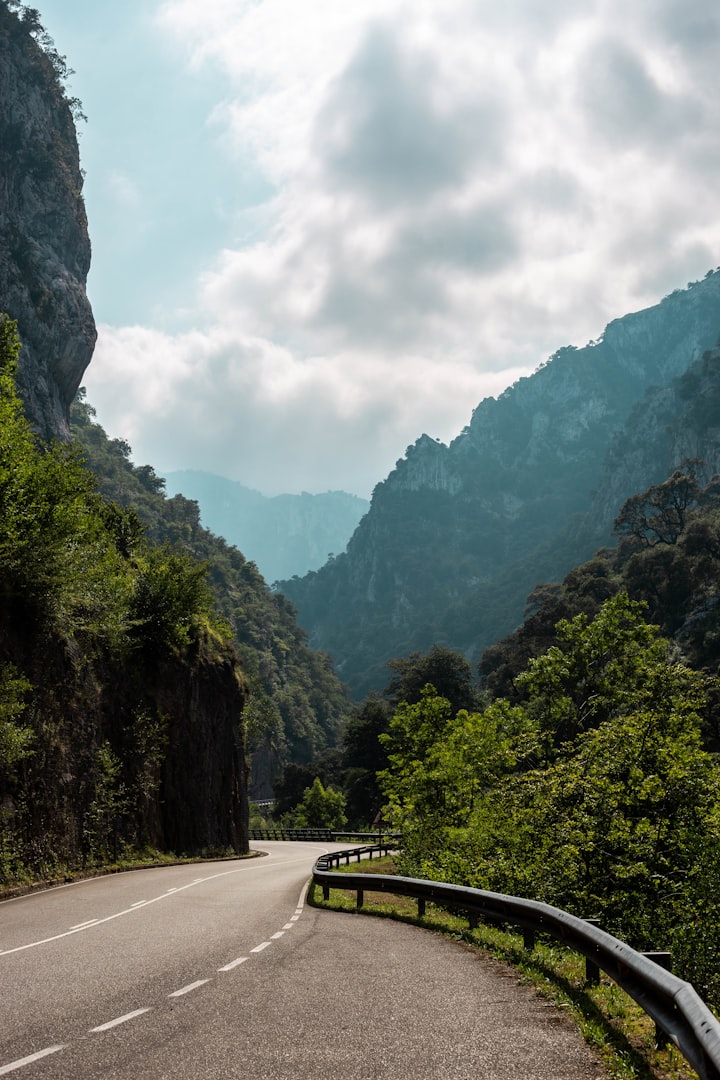10 best science road trips in the usa
road trips

The Grand Canyon and Meteor Crater in Arizona
The Grand Canyon in Arizona is one of the most iconic natural wonders in the United States. It is a steep-sided gorge carved by the Colorado River and is over a mile deep in some places. Visitors can hike, take a mule ride, or take a scenic drive along the rim to see the various layers of rock and the colorful landscape.
Meteor Crater, also in Arizona, is a large impact crater created by a meteorite that struck the earth about 50,000 years ago. It is the best-preserved meteorite impact site on Earth and offers visitors the opportunity to learn about the history of the planet and the solar system. Visitors can take a guided tour of the rim and the visitor center to learn more about the formation of the crater and the science behind it.
The Great Salt Lake and Bonneville Salt Flats in Utah
The Great Salt Lake in Utah is the largest saltwater lake in the Western Hemisphere and one of the most unique ecosystems in the United States. Its high salt content makes it uninhabitable for most fish, but it is home to brine shrimp and several species of migratory birds. Visitors can take a boat tour or hike along the shore to see the wildlife and learn about the history of the area.
The Bonneville Salt Flats, located just west of the Great Salt Lake, are a unique geological formation created by the evaporation of ancient Lake Bonneville. The salt flats are covered in a thick layer of salt and are a popular spot for speed racing and photography. Visitors can drive on the salt flats, witness the speed runs, and see the natural beauty of the area.
Yellowstone National Park in Wyoming and Montana
Yellowstone National Park, located mostly in Wyoming but also extending into Montana and Idaho, is one of the most popular national parks in the United States. It is known for its geothermal features, such as Old Faithful geyser and the Grand Prismatic Spring, as well as its diverse wildlife, including bison, elk, and grizzly bears. Visitors can hike, camp, or take a scenic drive through the park to see the various features and learn about the natural history of the area.
Yellowstone National Park also have a lot of geysers, hot springs, mudpots and fumaroles, which are caused by the underlying volcanic activity. It is also home to the largest collection of geysers in the world. Visitors can also enjoy a variety of activities such as fishing, camping, and wildlife watching.
The Kennedy Space Center in Florida
The Kennedy Space Center, located on Merritt Island, Florida, is the primary launch site for NASA's human spaceflight program. It is home to the launch pads used for the Apollo and Space Shuttle programs, as well as the Vehicle Assembly Building where the Saturn V and Space Shuttle were assembled. Visitors can take a tour of the facility and see the historic launch pads, the Saturn V Center, and the Apollo/Saturn V Center which showcase the Saturn V rocket, the most powerful rocket ever flown.
The Kennedy Space Center Visitor Complex offers a variety of tours and experiences, such as the NASA Up-Close tour, which takes visitors behind the scenes of the launch pads and the Vehicle Assembly Building, as well as the Cape Canaveral: Then and Now tour which provides a historical perspective on the early days of the space program. Additionally, the Kennedy Space Center Visitor Complex features the Space Shuttle Atlantis exhibit, which displays the orbiter in an upright position and allows visitors to walk around it, and the IMAX theater that shows films about space exploration.
The Great Lakes Science Center in Ohio
The Great Lakes Science Center, located in Cleveland, Ohio, is a hands-on science museum that aims to inspire curiosity and interest in science and technology. The Science Center offers a variety of interactive exhibits and programs that explore various scientific topics such as energy, the environment, and space science. Visitors can also explore the lakefront campus of the Science Center, which includes the NASA Glenn Visitor Center and the William G. Mather, a retired Great Lakes freighter that has been converted into a museum ship.
Some of the popular exhibits at the Great Lakes Science Center include the Eco-Tech exhibit that focuses on the environment, the NASA Glenn Visitor Center that highlights the work of the nearby NASA Glenn Research Center, and the Cleveland Creates exhibit that showcases the innovations of Cleveland-based companies. The Science Center also offers a variety of educational programs and special events throughout the year, such as science camps, science shows, and workshops.
The California Academy of Sciences in San Francisco
The California Academy of Sciences, located in San Francisco, California, is a natural history and research museum that features a wide range of exhibits and programs about the natural world. The Academy is home to a planetarium, an aquarium, a natural history museum and a four-story living rainforest. Visitors can take a journey through the different environments of the planet, from the depths of the ocean to the heights of the rainforest, and explore the diverse collection of plants and animals that call those places home.
Some of the popular exhibits at the California Academy of Sciences include the Steinhart Aquarium which houses 38,000 live animals representing more than 900 species, the Morrison Planetarium which offers daily shows and presentations, and the Kimball Natural History Museum that highlights the biodiversity of the planet. The Academy also offers a wide range of educational programs, such as science camps, lectures, and workshops, and is open for research for scientists and researchers.
The National Museum of Nuclear Science and History in New Mexico
The National Museum of Nuclear Science and History, located in Albuquerque, New Mexico, is a Smithsonian Affiliate museum that tells the story of the role that nuclear science and technology have played in shaping our world. The museum features exhibits and interactive displays that explore the history of nuclear science, from the discovery of radioactivity to the development of nuclear weapons and energy. Visitors can also see Cold War-era aircraft and missiles, including a B-29 Superfortress, an F-16 Fighting Falcon, and an MIM-23 Hawk missile.
Some of the popular exhibits at the National Museum of Nuclear Science and History include the Trinity Test exhibit which explores the first nuclear weapons test, the Nuclear Medicine exhibit that explains the use of radioisotopes in medicine, and the Nuclear Power exhibit that covers the history of nuclear power and its current status. The Museum also offers a variety of educational programs and special events, such as tours, lectures, and workshops, and has a research library that is open to the public.
The National Aeronautics and Space Administration (NASA) Goddard Space Flight Center in Maryland
The NASA Goddard Space Flight Center, located in Greenbelt, Maryland, is one of NASA's major research centers and is responsible for the design, development, and operation of scientific spacecraft and instruments. The center conducts a wide range of research in fields such as Earth science, planetary science, heliophysics, and astrophysics. The Goddard Visitor Center offers visitors the opportunity to learn about NASA's missions and research, and see real spacecraft and scientific instruments up close.
Visitors to the Goddard Visitor Center can take a self-guided tour, watch live demonstrations and multimedia presentations, and see artifacts such as rocket engines and satellites. The center also features interactive exhibits, such as a replica of the James Webb Space Telescope, which will be the most powerful space telescope ever built and is set to launch in 2021. The Goddard Space Flight Center also offers guided tours of its facilities, which are available by reservation and include a visit to the mission control center where scientists track and communicate with NASA's spacecraft.
The National Oceanic and Atmospheric Administration (NOAA) in Colorado
The National Oceanic and Atmospheric Administration (NOAA) is a federal agency that conducts research and provides information and forecasts related to the Earth's oceans, coastal areas, and atmosphere. The organization has several facilities across the United States, including one in Boulder, Colorado. The NOAA Earth System Research Laboratory (ESRL) in Boulder is one of the premier research laboratories in the world for studying atmospheric and climate science.
The NOAA ESRL in Boulder hosts a variety of research programs such as Global Monitoring Division, Chemical Sciences Division, Physical Sciences Division and the Global Systems Division. Visitors can take a self-guided tour of the facility, which includes a visit to the research labs, and also see exhibits on atmospheric science and weather forecasting. The facility also offers a variety of educational programs and tours for school groups, such as the "Weather in a Tank" program, which allows students to learn about weather phenomena through hands-on experiments. While the facility is not open for general public, it does have some guided tours available for interested visitors, which are scheduled by appointment.
The Franklin Institute in Philadelphia
The Franklin Institute, located in Philadelphia, Pennsylvania, is a science museum and research center that is dedicated to promoting a greater understanding of science and technology. The museum features a wide range of interactive exhibits and programs that explore various scientific topics such as physics, astronomy, and engineering. Visitors can explore the human body, witness live science shows, and even test their own skills in the high-wire unicycle or on the giant heart exhibit.
Some of the popular exhibits at The Franklin Institute include the Your Brain exhibit which explores the inner workings of the human brain, the Sports Challenge exhibit which allows visitors to test their athletic abilities, and the Giant Heart exhibit which provides an up-close look at the human heart. The Franklin Institute also offers a wide range of educational programs and special events, such as science camps, lectures, and workshops. The museum also has a planetarium and an IMAX theater, which show films about science and technology.






Comments
There are no comments for this story
Be the first to respond and start the conversation.